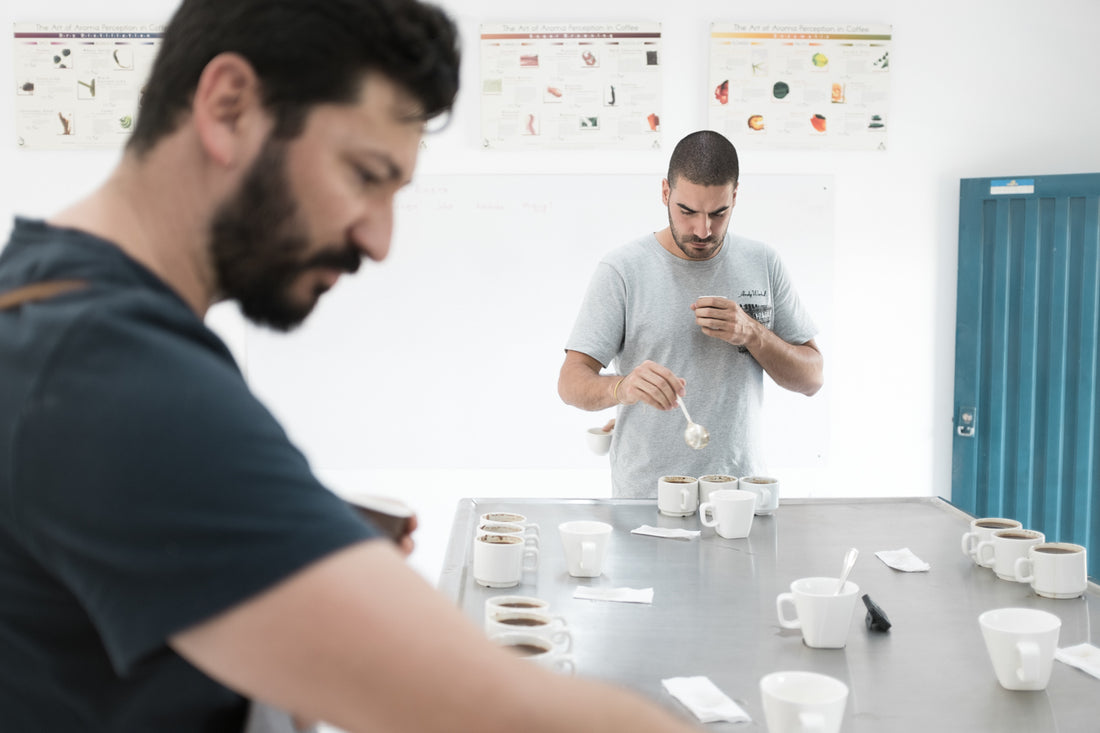Coffee tasting is a sensory experience that goes beyond having a simple cup. Organizing a tasting at home not only allows you to explore the diversity of coffee flavors, but also creates a welcoming environment to share the passion for this drink. In this guide, you will learn how to organize your own coffee tasting at home, from selecting beans to appreciating flavors and aromas.
Step 1: Select a Coffee Variety
Start your coffee tasting by carefully selecting a variety of beans. You can choose beans from different regions, processing or roasting profiles. Opt for fresh, high-quality beans to fully appreciate the diversity of flavors. Research the producing regions and highlight the distinctive characteristics of each type of coffee you will present.
Step 2: Prepare Various Preparation Methods
Give your guests a complete experience by providing a variety of brewing methods, such as drip coffee maker, French press, Aeropress, or more specialized methods like Chemex. Each method highlights different aspects of the coffee, allowing for a full appreciation of its flavor profile. Provides a brief description of each method and how it affects the flavor of the coffee.
Step 3: Organize the Tasting Elements
Define a dedicated space for tasting with good lighting and ventilation. Arrange coffee beans, cups, clean water, and note-taking pads on an organized table. Personalize the area with coffee-related details, such as informational signs about the regions of the beans you're cupping, to create an immersive environment.
Step 4: Tasting Guide
Before you begin, provide your guests with a more detailed tasting guide that explains the basic steps, from observing to tasting. It includes information on how to identify specific notes, suggests how to appreciate different characteristics, and encourages taking notes about the aromas, flavors, acidity, and body of each coffee.
Step 5: Tasting Process
Start the tasting process by explaining the importance of smelling the coffee beans to appreciate the aromas before preparation. While the hot water is poured over the coffee, the observation of the release of gases and the formation of the "cream" stands out. Invite your guests to taste and describe the flavors they experience. Encourage everyone to participate and share their impressions to enrich the experience.
Step 6: Discussion and Comparison
After cupping each coffee, encourage an open discussion. Compare each person's notes and highlight the differences between the coffees. Discover which flavor profiles are most appreciated and why. Ask about everyone's preferences and whether they can identify the specific nuances of each coffee. This step expands the interaction and enriches the learning experience.
Step 7: Social Moment
The tasting ends with a more extended social moment. Serve some snacks that complement the flavors of the coffee and continue the coffee conversation. Share anecdotes about the origins of beans, discuss sustainable practices in coffee production, or explore specialty coffee recipes. This is a time to delve deeper into coffee culture and strengthen ties between participants.
Step 8: Coffee and Food Pairing
Expand the experience by offering a coffee and food pairing. Introduce foods that complement and highlight the flavors of the different coffees tasted. From sweets to cheeses, a carefully selected pairing can elevate the experience and bring a new dimension to the tasting.
Step 9: Explore Roasts
If possible, incorporate different roast levels into your tasting. From light to dark roasts, this will allow participants to appreciate how the roasting process influences the flavors and aromas of the coffee. It encourages exploring the nuances that arise with each level of roast.
Step 10: Visual and Auditory Elements
For a multi-sensory experience, consider adding visual and auditory elements. You can prepare visual presentations about coffee-growing regions or play music that complements the atmosphere. These additional elements can intensify the experience and create a unique atmosphere for your coffee tasting at home.
Hosting a coffee tasting at home is more than a sensory experience; It is a celebration of coffee culture and the connection between friends or family. With these simple steps, you can transform your space into a sanctuary for coffee lovers and explore the fascinating world of coffee flavors together. Enjoy every sip!
